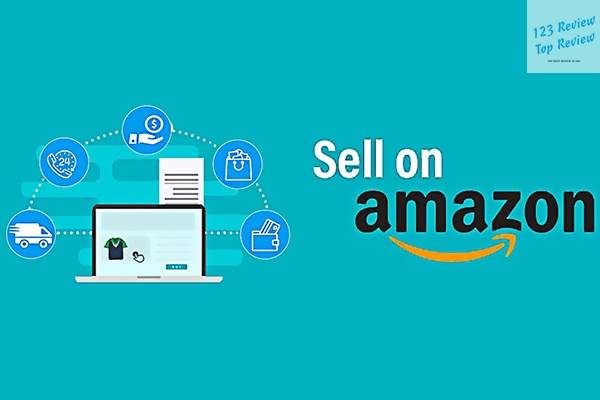Selling on Amazon is a significant opportunity for both new and established entrepreneurs. With millions of active users and a robust infrastructure, Amazon offers an unparalleled platform to reach a global audience. However, succeeding on Amazon requires more than just listing a product; it demands strategic planning, understanding of the platform, and consistent effort.
In this article, 123 Review will walk you through every step of the process, from setting up your seller account to optimizing your listings and analyzing your performance for continued success.
Understanding Seller Registration
Creating an Amazon Seller Account
The journey to becoming a successful Amazon seller begins with creating an Amazon Seller account. Amazon offers two types of seller accounts: Individual and Professional. The Individual account is suitable for those who plan to sell fewer than 40 items per month, as it charges a per-item fee. On the other hand, the Professional account is ideal for sellers who expect higher volumes, offering a flat monthly fee with access to advanced selling tools and features.

To get started, visit the Amazon Seller Central website. During the sign-up process, you’ll be prompted to provide essential information, including your business name, address, email, and password. Amazon will also ask for your phone number for verification purposes. Once this information is submitted, you’ll be guided through the next steps of setting up your account.
Verifying Your Identity and Business Information
Amazon takes the security and legitimacy of its marketplace seriously. As part of the registration process, you’ll need to verify your identity and business details. This step ensures that you are a legitimate seller and helps protect the platform from fraud.
The verification process requires you to provide various documents, such as a government-issued ID (passport, driver’s license, etc.), tax identification number (TIN or EIN), and bank account details for payments. Additionally, if you are registering as a business entity, you’ll need to provide your business registration documents. Make sure all the information is accurate and up-to-date, as discrepancies can delay the verification process.
Choosing the Right Selling Plan
Selecting the appropriate selling plan is crucial to your success on Amazon. The Individual Plan is straightforward, with no monthly subscription fee but a $0.99 fee for each item sold. This plan is ideal if you’re testing the waters or only plan to sell a limited number of products.
Conversely, the Professional Plan costs $39.99 per month but does not charge a per-item fee. It’s designed for serious sellers who anticipate higher sales volumes and need access to advanced features like bulk listing, inventory management, and advertising tools. This plan also allows you to sell in restricted categories, participate in promotions, and utilize Amazon’s FBA (Fulfillment by Amazon) service. Consider your business goals, sales volume, and budget when choosing the right plan.
Listing Your Products Effectively
Optimizing Product Titles for Search
Your product title is one of the most important elements of your Amazon listing. It’s not just about naming your product but about making it easily discoverable by potential buyers. To optimize your title, incorporate relevant keywords that shoppers are likely to use when searching for products like yours. For example, instead of a simple title like “Coffee Maker,” you might use “Stainless Steel Drip Coffee Maker with 12-Cup Capacity and Programmable Timer.”
Amazon allows up to 200 characters for product titles, but it’s advisable to keep it within 80-150 characters for better readability. Ensure the title is descriptive yet concise, including key attributes like brand, model, size, color, and key features. Avoid using promotional language or symbols, as Amazon’s guidelines prohibit this.
Crafting Compelling Product Descriptions
A compelling product description not only informs the customer about the product but also convinces them to make a purchase. Your description should highlight the product’s features, benefits, and any unique selling propositions (USPs) that set it apart from competitors.
Start with a brief overview of what the product does and why it’s beneficial. Follow this with detailed descriptions of its features, such as materials, dimensions, usage instructions, and any certifications or warranties. Use bullet points for clarity and to make the information easily digestible. Ensure your tone matches your brand’s voice—whether it’s professional, friendly, or technical.
In addition to the description, consider the backend keywords (search terms) that are not visible to customers but help Amazon’s algorithm categorize and rank your product. These keywords should include variations of your main keywords and other relevant terms that may not fit naturally into your title or description.
Utilizing High-Quality Product Images
Images play a crucial role in online shopping, as they allow customers to visualize the product before making a purchase. High-quality images can significantly increase your conversion rates, so it’s essential to invest in professional photography if possible.
Amazon requires that your main image shows the product on a plain white background, with the product filling at least 85% of the image space. Additional images can showcase the product from different angles, in use, and highlight specific features. You can also include lifestyle images that show the product in real-world settings, which can help customers imagine how it fits into their lives.
Amazon allows up to nine images per listing, including a video. Make sure your images are high resolution (at least 1000×1000 pixels) to enable the zoom function, which lets customers see the product details up close. This can significantly enhance the customer’s shopping experience and increase the likelihood of a sale.
Keyword Research for Amazon Listings
Identifying Relevant Keywords
Effective keyword research is the foundation of a successful Amazon listing. Keywords are the terms and phrases that customers use to search for products, and using the right keywords in your listings can dramatically improve your visibility on Amazon.
Start by brainstorming a list of potential keywords related to your product. Think about what your target customers might type into the search bar when looking for a product like yours. Then, use Amazon’s autocomplete feature to discover popular search queries. Simply type your primary keyword into the Amazon search bar and observe the suggestions that appear.
You can also analyze competitors’ listings to see which keywords they are targeting. Tools like Helium 10, Jungle Scout, and MerchantWords can provide insights into keyword search volume, trends, and competition, helping you refine your keyword list.
Using Long-Tail Keywords for Optimization
Long-tail keywords are specific, detailed phrases that typically have lower search volume but higher intent. For example, instead of targeting the broad keyword “coffee maker,” you might use a long-tail keyword like “programmable stainless steel coffee maker with 12-cup capacity.”
Long-tail keywords are less competitive and can help you reach customers who are further along in the buying process and more likely to convert. Incorporating these keywords into your product title, bullet points, and description can improve your chances of ranking higher for those specific searches.
Utilizing Tools for Effective Keyword Research
Several tools are available to help you conduct thorough keyword research and optimize your Amazon listings. Helium 10, for instance, offers a suite of tools designed specifically for Amazon sellers, including keyword research, product research, and listing optimization features.
Jungle Scout is another popular tool that provides keyword research, product tracking, and sales analytics. It helps you identify profitable keywords, monitor competitors, and optimize your listings for better visibility.
MerchantWords is a tool focused on keyword research, offering insights into the search behavior of Amazon customers. It provides keyword suggestions, search volume data, and competitive analysis, allowing you to fine-tune your listings and target the most relevant keywords.
Pricing Strategies for Amazon Success
Competitive Pricing Tactics
Pricing is one of the most critical factors that influence a customer’s purchasing decision on Amazon. With the vast number of sellers and products available, your pricing strategy can make or break your success on the platform.
Start by researching the prices of similar products in your category. Consider factors such as brand reputation, product quality, and customer reviews when comparing prices. It’s essential to find a balance between being competitive and maintaining healthy profit margins.
Dynamic pricing strategies, where prices are adjusted based on market conditions, competitor pricing, and demand, can be highly effective on Amazon. Tools like RepricerExpress or Seller Snap can automate this process, helping you stay competitive without constantly monitoring your prices.
Understanding Amazon Fees and Profit Margins
Selling on Amazon comes with various fees, including referral fees, fulfillment fees, and storage fees (if you’re using FBA). Understanding these fees is crucial to setting your prices effectively and ensuring you maintain a healthy profit margin.
Referral fees are a percentage of the total sale price and vary by category, typically ranging from 6% to 15%. Fulfillment fees cover the cost of picking, packing, and shipping your products, while storage fees apply to products stored in Amazon’s fulfillment centers.
To calculate your profit margins, subtract all costs (including Amazon fees, cost of goods sold, shipping, and any advertising expenses) from your selling price. Aim for a profit margin that allows for both competitive pricing and sustainable business growth.
Running Promotions and Discounts
Promotions and discounts are powerful tools for driving sales and increasing product visibility on Amazon. They can help you attract new customers, clear out excess inventory, and boost your product rankings.
Amazon offers several promotional tools, including Lightning Deals, Coupons, and Promotions. Lightning Deals are time-limited discounts that appear on Amazon’s deals page, while Coupons allow you to offer a specific discount on your product. Promotions can include percentage-off discounts, free shipping, or buy-one-get-one deals.
When running promotions, it’s important to balance the potential increase in sales with the impact on your profit margins. Use promotions strategically to achieve specific business goals, such as increasing brand awareness, launching a new product, or boosting sales during peak shopping periods.
Maximizing Product Visibility
Utilizing Amazon SEO Techniques
Search engine optimization (SEO) on Amazon involves optimizing your product listings to rank higher in search results. The goal is to make your products more visible to potential buyers, thereby increasing traffic and sales.
Start by incorporating your primary and secondary keywords into your product title, bullet points, and description. Make sure the content is naturally written and provides value to the customer while still being keyword-rich. Backend search terms, which are not visible to customers, should include additional keywords that didn’t fit into the visible content.
Amazon’s A9 algorithm also takes into account factors such as sales history, customer reviews, and price when ranking products. Therefore, optimizing these elements—by encouraging positive reviews, maintaining competitive pricing, and offering excellent customer service—can further improve your rankings.
Leveraging Amazon Advertising
Amazon Advertising offers a range of options to increase your product visibility and drive sales. Sponsored Products, Sponsored Brands, and Sponsored Display ads are the most common types of Amazon ads.
Sponsored Products ads promote individual listings and appear in search results and product pages. These ads are pay-per-click (PPC), meaning you only pay when a customer clicks on your ad. Sponsored Brands ads showcase your brand logo and a selection of your products in a banner at the top of search results, while Sponsored Display ads target customers based on their browsing behavior.
To get the most out of Amazon Advertising, start with a small budget and test different ad types, keywords, and targeting options. Monitor the performance of your campaigns closely and adjust your strategy based on the results.
Encouraging Customer Reviews and Ratings
Customer reviews and ratings are crucial for building trust and credibility on Amazon. Positive reviews can significantly impact a customer’s decision to purchase your product, while a high rating can improve your product’s visibility and ranking.
Encourage customers to leave reviews by following up with them after a purchase, either through Amazon’s messaging system or via email. Provide excellent customer service and promptly address any issues or concerns, as satisfied customers are more likely to leave positive feedback.
Amazon’s Early Reviewer Program and Vine Program are two initiatives designed to help new products gain reviews. The Early Reviewer Program encourages customers to leave reviews in exchange for a small reward, while the Vine Program invites top reviewers to test and review new products.
Fulfilling Orders on Amazon
Understanding Fulfillment Options: FBA vs. FBM
When selling on Amazon, you have two primary fulfillment options: Fulfillment by Amazon (FBA) and Fulfillment by Merchant (FBM). Each option has its advantages and disadvantages, depending on your business model and goals.
FBA allows you to store your products in Amazon’s fulfillment centers, where Amazon handles storage, packaging, shipping, and customer service. This option is ideal for sellers who want to take advantage of Amazon Prime’s fast shipping and focus on scaling their business. However, FBA comes with storage and fulfillment fees, which can add up, especially if you have slow-moving inventory.
FBM, on the other hand, means you handle all aspects of fulfillment, including storage, packaging, and shipping. This option gives you more control over the fulfillment process and can be more cost-effective for low-volume or large, bulky items. However, you’ll need to manage inventory, shipping logistics, and customer service, which can be time-consuming.
Managing Inventory and Shipping
Effective inventory management is essential to avoid stockouts, overstock, and costly storage fees. Use inventory management software or Amazon’s own tools to track your stock levels, set reorder points, and forecast demand.
If you’re using FBA, Amazon will notify you when your inventory is running low and needs replenishment. Make sure to ship products to the fulfillment centers in a timely manner to avoid stockouts, which can hurt your product’s ranking and sales.
For FBM sellers, managing shipping logistics is crucial. Choose reliable shipping carriers, offer multiple shipping options, and provide tracking information to customers. Consider using Amazon’s Buy Shipping service, which offers discounted shipping rates and ensures you meet Amazon’s shipping performance metrics.
Handling Returns and Customer Service
Providing excellent customer service is key to maintaining a positive seller reputation on Amazon. This includes handling returns efficiently and addressing customer inquiries promptly.
If you’re using FBA, Amazon will handle most of the customer service, including returns and refunds. However, it’s still important to monitor customer feedback and resolve any issues that arise.
For FBM sellers, you’ll need to manage returns and customer service directly. Make sure your return policy is clear and easy to find, and respond to customer inquiries within 24 hours. Providing a hassle-free return process and excellent customer service can help you build a loyal customer base and increase repeat business.
Analyzing and Improving Your Amazon Business
Monitoring Sales and Performance Metrics
Regularly monitoring your sales and performance metrics is essential to understanding the health of your Amazon business and identifying areas for improvement. Amazon provides various reports and analytics tools in Seller Central to help you track your performance.
Key metrics to monitor include sales volume, conversion rate, average order value, and customer return rate. These metrics can give you insights into how well your products are performing and where you might need to make adjustments.
Additionally, pay attention to Amazon’s performance metrics, such as order defect rate (ODR), late shipment rate, and customer feedback. Maintaining good performance metrics is crucial to staying in Amazon’s good graces and avoiding account suspension.
Using Data to Optimize Listings and Marketing Strategies
Data-driven decision-making is key to optimizing your Amazon listings and marketing strategies. Use the data from your sales and performance reports to identify trends, understand customer behavior, and refine your product listings.
For example, if you notice a high bounce rate on your product pages, it could indicate that your product images, descriptions, or pricing need improvement. Similarly, if a particular keyword is driving a lot of traffic but not converting into sales, consider adjusting your product title or description to better match customer expectations.
Experiment with different marketing strategies, such as running targeted ads, offering promotions, or optimizing your keywords, and use the data to measure their effectiveness. Continuous testing and optimization can help you stay competitive and grow your Amazon business over time.
Scaling Your Amazon Business for Long-Term Success
Once you have a successful product or two on Amazon, the next step is to scale your business for long-term growth. This might involve expanding your product line, exploring new markets, or investing in advanced advertising strategies.
Consider using Amazon’s international marketplaces to reach customers in other countries. Amazon makes it relatively easy to sell internationally, with tools to help you manage currency conversion, language translation, and shipping logistics.
Expanding your product line is another way to scale your business. Look for complementary products that your existing customers might be interested in, or explore new niches that align with your brand. As you add more products, continue to apply the best practices for listing optimization, keyword research, and customer service.
Finally, consider reinvesting your profits into advanced advertising strategies, such as Sponsored Brands or Amazon DSP (Demand-Side Platform), to drive more traffic and sales to your listings. Scaling a business on Amazon requires patience, persistence, and a willingness to adapt to changes in the marketplace.
Conclusion
Selling on Amazon is a dynamic and rewarding opportunity, but it requires careful planning, strategic execution, and continuous improvement. By understanding the platform, optimizing your listings, pricing competitively, and leveraging Amazon’s tools and services, you can build a successful Amazon business that thrives in the competitive e-commerce landscape. Whether you’re just starting or looking to scale, this comprehensive guide provides the foundation you need to succeed on Amazon.





